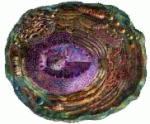Cell Biology
|
17 december 2014 05:50:06 |
| Engineering of Serine-Deamination pathway, Entner-Doudoroff pathway and pyruvate dehydrogenase complex to improve poly(3-hydroxybutyrate) production in Escherichia coli (Microbial Cell Factories) |
|
Tweet Background:
Poly(3-hydroxybutyrate) (PHB), a biodegradable bio-plastic, is one of the most common homopolymer of polyhydroxyalkanoates (PHAs). PHB is synthesized by a variety of microorganisms as intracellular carbon and energy storage compounds in response to environmental stresses. Bio-based production of PHB from renewable feedstock is a promising and sustainable alternative to the petroleum-based chemical synthesis of plastics. In this study, a novel strategy was applied to improve the PHB biosynthesis from different carbon sources.
Results:
In this research, we have constructed E. coli strains to produce PHB by engineering the Serine-Deamination (SD) pathway, the Entner-Doudoroff (ED) pathway, and the pyruvate dehydrogenase (PDH) complex. Firstly, co-overexpression of sdaA (encodes L-serine deaminase), L-serine biosynthesis genes and pgk (encodes phosphoglycerate kinase) activated the SD Pathway, and the resulting strain SD02 (pBHR68), harboring the PHB biosynthesis genes from Ralstonia eutropha, produced 4.86 g/L PHB using glucose as the sole carbon source, representing a 2.34-fold increase compared to the reference strain. In addition, activating the ED pathway together with overexpressing the PDH complex further increased the PHB production to 5.54 g/L with content of 81.1% CDW. The intracellular acetyl-CoA concentration and the [NADPH]/[NADP+] ratio were enhanced after the modification of SD pathway, ED pathway and the PDH complex. Meanwhile, these engineering strains also had a significant increase in PHB concentration and content when xylose or glycerol was used as carbon source.
Conclusions:
Significant levels of PHB biosynthesis from different kinds of carbon sources can be achieved by engineering the Serine-Deamination pathway, Entner-Doudoroff pathway and pyruvate dehydrogenase complex in E. coli JM109 harboring the PHB biosynthesis genes from Ralstonia eutropha. This work demonstrates a novel strategy for improving PHB production in E. coli. The strategy reported here should be useful for the bio-based production of PHB from renewable resources. |
| 81 viewsCategory: Microbiology, Cell Biology |
 First co-expression of a lipase and its specific foldase obtained by metagenomics (Microbial Cell Factories) First co-expression of a lipase and its specific foldase obtained by metagenomics (Microbial Cell Factories)Genome engineering for improved recombinant protein expression in Escherichia coli (Microbial Cell Factories) 
|
| blog comments powered by Disqus |
MyJournals.org
The latest issues of all your favorite science journals on one page
The latest issues of all your favorite science journals on one page



